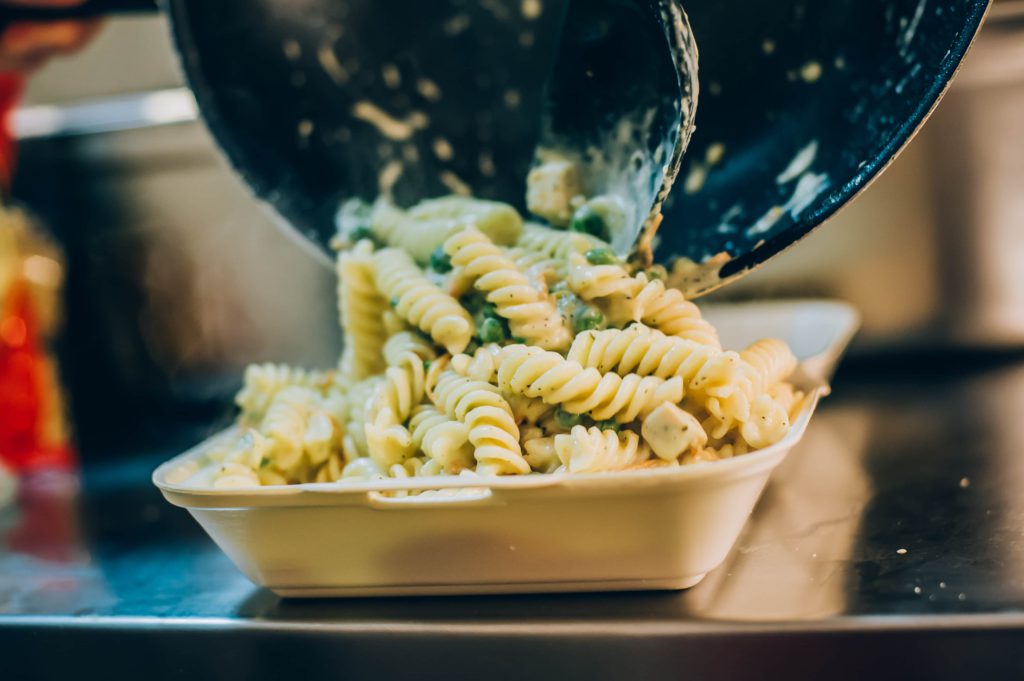Over the last few years, we’ve seen a huge increase in the consumption of eat-at-home meals. Whether it’s the traditional ‘takeaway’ or food delivered to your door, the desire to order out and dine in is not slowing down.
This trend has meant that more food packaging supplies are needed by Perth cafes and restaurants. Not only in quantity but also variety. Yes, food packaging is not one-size-fits-all. Different foods require different packaging – for convenience, for safety and your customer’s health.
If you don’t choose the correct food packaging, you could be putting your customers at risk. We’ll discuss the potential health issues later.
Along with looking after your customers, you also need to consider the environment. Food packaging creates a lot of waste and it’s something that needs to be addressed. As you can see, it’s a big topic, so let’s get started.
How safe are your food packaging supplies?

Food Standards Australia New Zealand (FSANZ) requires proprietors of food to:
- Only use packaging material that is fit for its intended purpose
- Only use material that is not likely to cause food contamination
- Ensure there is no likelihood that the food may become contaminated during the packaging process
One of the biggest mistakes when packaging food is not considering the conditions of the food. This includes the temperature, the type of food (e.g. oily or acidic) and whether the packaging will come in direct contact with the food.
When incorrect packaging is used, there is a potential for chemicals to leach into the food. A 2018 survey from FSANZ analysed the levels of chemicals like phthalates and plasticisers and the potential risks of these chemicals filtering into the food – you can read the results here.
One way to minimise this issue is to purchase your packaging supplies from a reputable supplier. You can also explore healthy alternatives like bamboo or specially designed eco-friendly packaging.
What are the different types of food packaging?

The packaging you choose should be determined by the products you sell. For example, if you’re serving a cold garden salad, there are no heating issues to affect the packaging. However, the salad may contain oil so your packaging will need a solid absorbent base. You cannot use one form or packaging for all foods. Let’s look at a few food packaging options.
Bamboo Packaging
Bamboo is continuing to be an extremely popular choice. It is well regarded as a sustainably grown product and much of the bamboo food packaging is biodegradable. Its environmentally friendly nature doesn’t affect the strength and versatility of plates, bowls or coffee cups. Bamboo provides an ideal option for both hot and cold foods.
Paper/Cardboard Packaging
The old days of grease filled paper packaging are long gone. Today, paper containers can be grease resistant, biodegradable and recyclable. Packaging suppliers like Stanlee Hospitality Supplies, offer paper and cardboard products made from natural fibres or recycled cardboard making them a healthy and eco-friendly choice.
Plastic Packaging
As we know, the world is gradually moving away from single-use plastics. Just recently, the South Australian Government passed a bill banning the use of single use plastics products. The bill will likely come into effect in 2021 and will see products like plastic cutlery, plates and drink stirrers all added to the banned list. Recent studies by the Food Standards Australia New Zealand found that the exposure to chemicals in selected plastic packaging was low and not of concern to human health. It is still best to talk to your supplier and ensure that the packaging your buying is suitable for the food you are serving.
How to ensure your food packaging is safe

Quality of food packaging
The quality refers to both the material and the condition of the packaging. Using a cheap product that has the potential to break or is not classified food safe can be dangerous to your customers. You should also consider the condition of your existing packaging. Is it clean, undamaged and has it been stored correctly?
Select appropriate food packaging
It’s important to repeat that food packaging is not one-size-fits-all. Talk to your supplier about which packaging is best for oily or acidic food and which is best for cold or hot food. If food needs to be stored or reheated in the packaging, ask which products are the safest option.
If you run a café, restaurant or canteen, you need to ensure the food packaging you supply is healthy, environmentally friendly and designed for the food you’re serving. To find out the safest and most affordable food packaging options, contact Stanlee Hospitality Supplies – Perth’s leading hotel, restaurant and café supplier.




